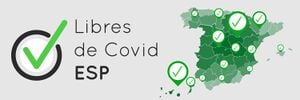Needs[edit | edit source]
What are needs, and how are they different from systems?
Two examples:
- My mobile phone is about to run out of battery, but I have to talk to you. "The mobile" is the system. "Talk to you" is my need.
- Schools are the system. The needs are those of students, parents, teachers, society in general. Some needs only exist in pandemics and were not there 2 years ago. Students need to learn, companionship, physical safety ("not bullying"), and now also respiratory safety. Teachers have their needs. Parents, theirs.
There are two types of needs: vital ones (like food) and important ones (like education):
- Vital needs. If they are not covered, there are early deaths. For vital needs, see http://www.ResilienceMaps.org.
- Important needs. If they are not covered, there are late deaths and there is a reduction in the quality of life, the ecosystem, etc.
In order to redesign systems, it is necessary to be able to describe it and then modify it.
System description[edit | edit source]
Each system can be described, as in http://resiliencemaps.org, according to the levels of provision.
Each need can be resolved by the individual, by the family, by the mini-tribe, by the neighborhood, by the municipality, by the region ... and so on up to the world level or beyond.
This allows us to describe the complete system as an "S by N" table: the set of systems (S) that we use to respond to the set of needs (N).
The school, the column with the school, sits at the neighborhood or city level. It is, outside respiratory pandemics, our default system to respond to each and every need of students, parents, teachers, and the whole of society. Now, what can we do in a "severe enough" respiratory pandemic?
System redesign[edit | edit source]
The coronavirus and its variants, and the actions we take to slow it down, all this means that we have to mark some cells in the grid as unusable, with a light bulb like in the minesweeper videogame (add chart to represent this). The rest of the boxes are still usable.
The system we had is not viable (because it has been damaged by the pandemic, or because it is necessary to modify its operation to prevent infections), and we are left with 3 types of things:
- the needs, which do not go away even if the system has failed or we need to modify it
- the pieces of the system we had
- parts that are part of other systems and that we might be able to use
Example: redesign of the education system[edit | edit source]
relocate in the Education Sector and in Reduction of respiratory contacts
There are at least two possibilities:
- Ruralised school, based on the "unitary schools", in which there are a dozen children of different ages, for a small town. These would mean decompressing the big school into many classrooms in the community.
- Mini-tribes, a group of few adults and few children. If each adult cares for a child, adults cannot act like adults and children cannot act like children, with potentially serious consequences for mental health and safety. By living in a group, children have fun together, adults too, and adults can share tasks: a single mask makes the purchase of 6 people.
How to articulate the redesign[edit | edit source]
To organize rural schools in a city, it is possible that each school:
- looks at itself (teachers, etc, "the pieces of the system that we want to reinvent")
- also look around itself (the "pieces of other systems") and ask city councils, sports associations, parents, etc., to assign premises.
- Examine which premises could be used as classrooms, taking into account the needs. Learning and company, and also physical safety (avoiding closed doors that hide accidents and abuse) and respiratory (good ventilation).
It is possible to have a spreadsheet to see how many people there are in society, and to begin to imagine how much of the problem we could solve with these 2 strategies (mini-tribes and rural schools).
The experiences of early innovators can be added to create a "guide" to help those who come later. Each school would create its own plan and publish it so that it will be known to parents, the community and the appropriate administrative level in the educational structure. That could ensure that the system is optimized with input and supervision from everyone.
The administrative structure (even reaching the national and international level) would take care of the percentage not covered by this system, which must also be covered. It would see the impediments and make extra contacts to overcome them. For example: "with this approach we solve 62% of the problem, and we ask for help for the rest - children with special needs, the school, the neighborhood".
